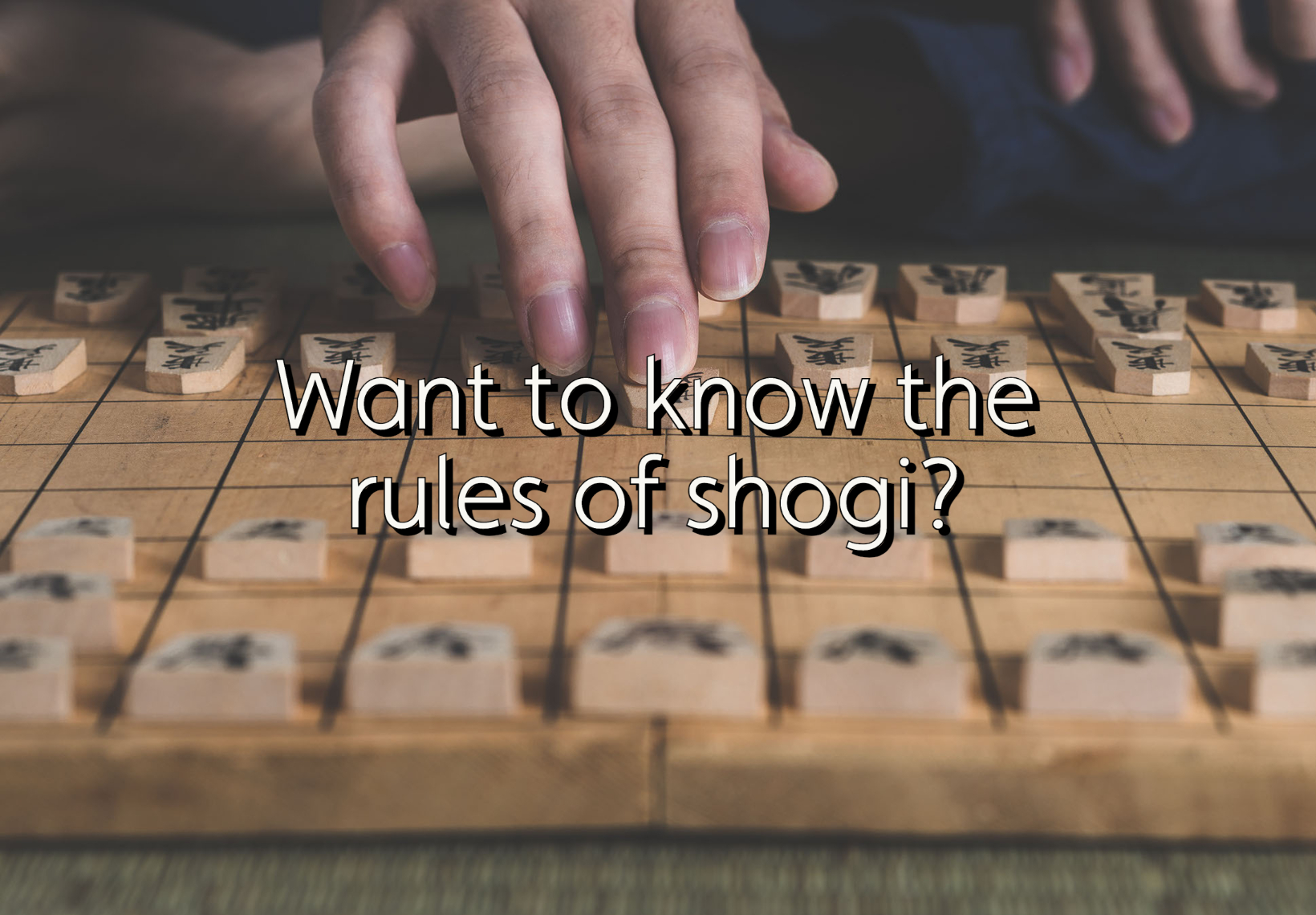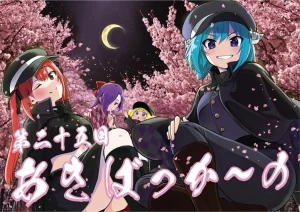Are you interested in Japanese shogi? Want to know the rules of shogi?
On this page, I will explain the history, rules, and how to play shogi in English in an easy-to-understand manner so that people around the world can learn about the fun of shogi. In addition, we will introduce an explanation video of shogi and an application that allows you to enjoy shogi online.
Benefits of learning the rules of shogi
By learning the rules of Shogi, you can enjoy playing games with Shogi enthusiasts from all over the world. Shogi is now gaining worldwide attention as a wholesome online game that is gentler than MOBAs (Multiplayer Online Battle Arena) and shooters, and can be enjoyed by men and women of all ages.
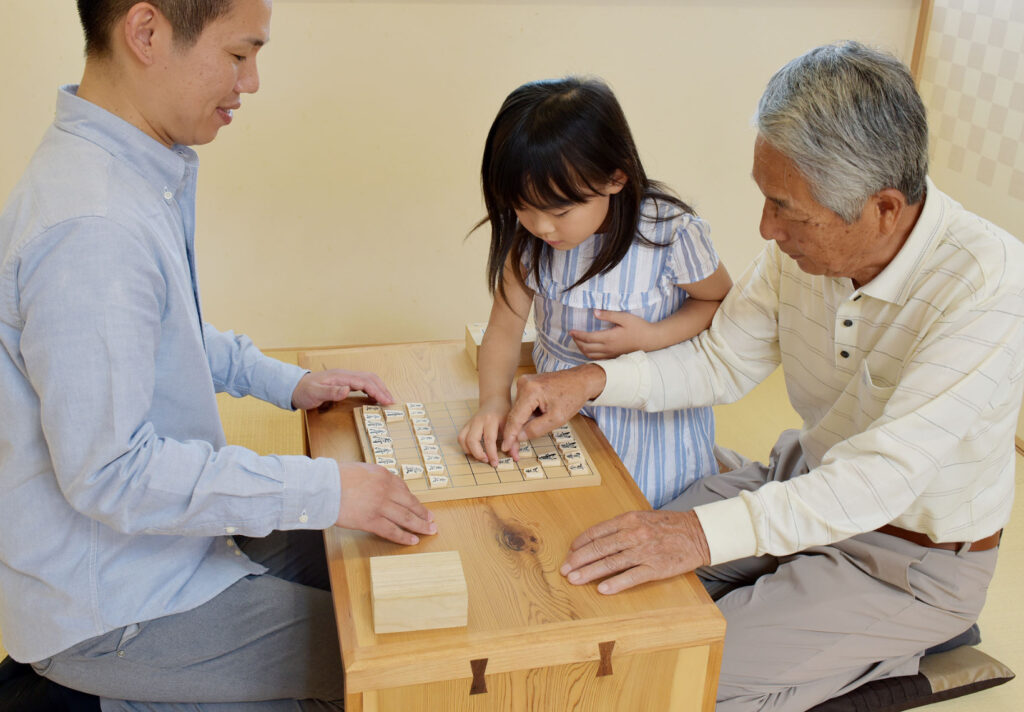
I also enjoy watching shogi matches. By watching many matches, you can cultivate the ability to think, so you can improve your shogi skills. And that will help you train your brain. It will help you a lot in your work and home life as it will make your mind clearer.
Basic knowledge of shogi
Shogi is a Japanese board game. It was introduced to Japan from China in the 8th century. Similar to chess, shogi is played on a 9-square-by-9-square board with 20 types of pieces labeled with Japanese kanji characters.
Shogi became popular in his 16th century during Japan’s Warring States period. This game was used by military commanders to train the strategy and tactics of their troops.
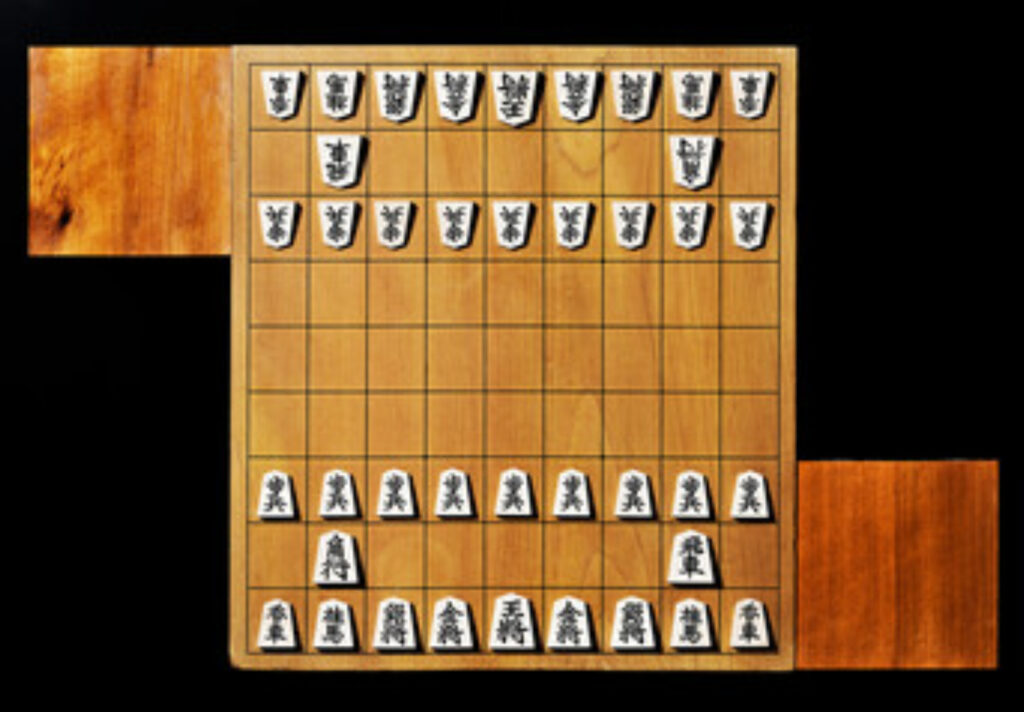
Shogi rules
The rules of shogi are relatively simple. The object of the game is to checkmate the opponent’s king, just like in chess. However, unlike chess, once a piece is captured, it becomes a spare piece for the capturing player and can be placed on the board as that player’s own piece on a later turn.
The game starts with each player with his 20 pieces, and each piece has a specific move and captures his pattern.
Names of shogi pieces
- ‘歩‘ FU : 9 Footsoldiers (Pawns)
- ‘香車‘ KYOSHA : 2 Lances
- ‘桂馬‘ KEIMA : 2 Honorable Horses (Knights)
- ‘銀将‘ GIN : 2 Silver Generals
- ‘金将‘ KIN : 2 Gold Generals
- ‘角‘ KAKU : 1 Bishop
- ‘飛車‘ HISHA : 1 Flying Chariot (Rook)
- ‘王‘ OH : 1 Jewelled General (King).
How to arrange shogi pieces (starting board of shogi)
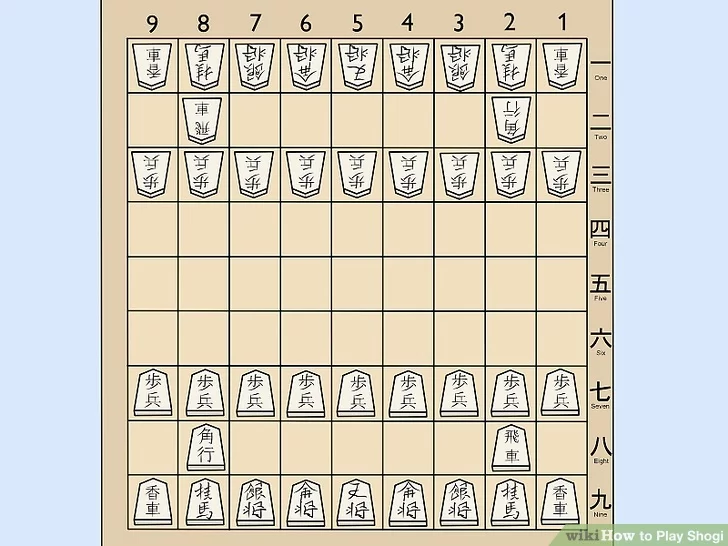
Each player’s 9 pieces are placed in the 3rd row closest to the player. Place the rook and bishop in the second row, one space in from the end, with the rook on the right and the bishop on the left. Place the remaining pieces in the row closest to the player. A lance on each corner, a knight on the next square from the corner, and a silver general next to the knight. Place the king in the middle square of the nearest row, with gold generals on either side.
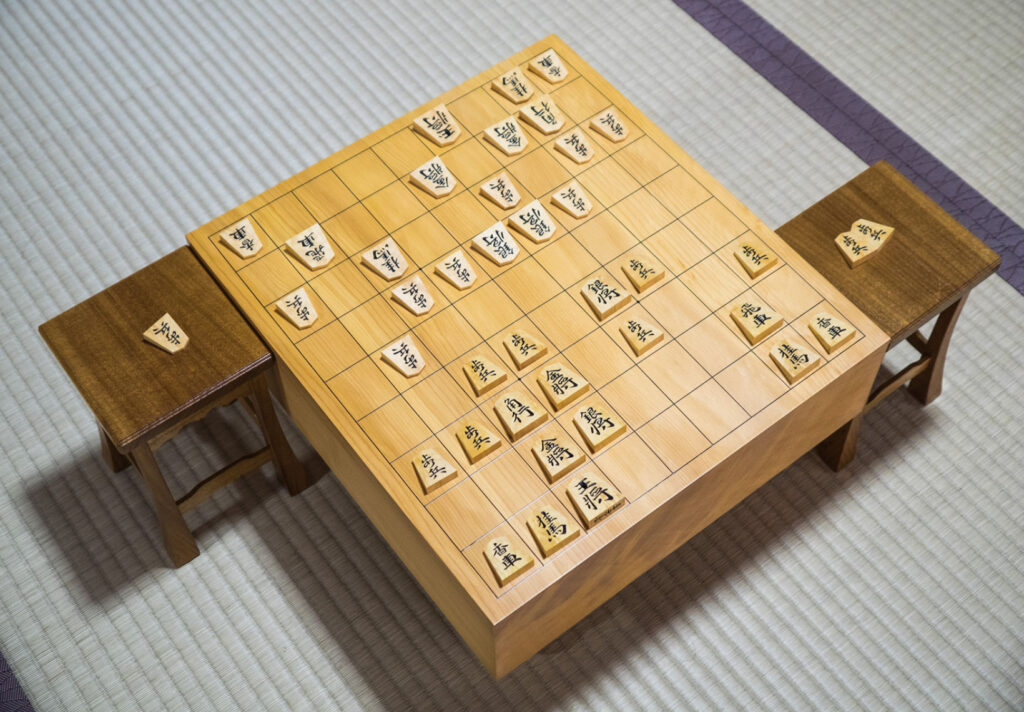
Note:
A shogi piece has a front and a back. The front is black and the back is red, and the character (kanji) is written. At the start, line them up with the table (black character) facing up. * The back (red character) is used when advancing to the enemy camp. At that time, the piece powers up. Details are explained below.
Please refer to the wikiHow site for easy-to-understand instructions on how to arrange shogi pieces and how to start the game.
Shogi piece movement rules
However, wikiHow does not explain the rules of shogi piece movement. If you don’t understand this, you can’t play or watch shogi.
I will explain the basic rules of shogi and the role of each piece (range of movement, etc.).
- Pawn – moves one square forwards only.
- Lance – moves any number of spaces forwards.
- Knight – moves two squares forwards and then one square sideways. Only two squares are available to the Knight but, in compensation, it is the only piece that can jump over other pieces.
- Silver General – moves one space in one of 5 directions – forwards, diagonally forwards or diagonally backwards.
- Gold General – moves one space in one of 6 directions – forwards, diagonally forwards, sideways or backwards.
- Bishop – moves any number of spaces diagonally but cannot jump over another piece.
- Rook – moves any number of spaces orthogonally but cannot jump over another piece.
- King – moves one space in any direction diagonally or orthogonally EXCEPT that the King cannot move onto a square that is attacked by an opposing piece.
As the game progresses and a piece invades an opponent’s territory, a player may choose to promote that piece. The promotion zone is the last three lines of the opponent’s base. When the piece is invaded that far, flip the piece over to the back (red letters) to reveal the symbol of the promoted piece. The promoted pieces are powered up and can be moved as follows.
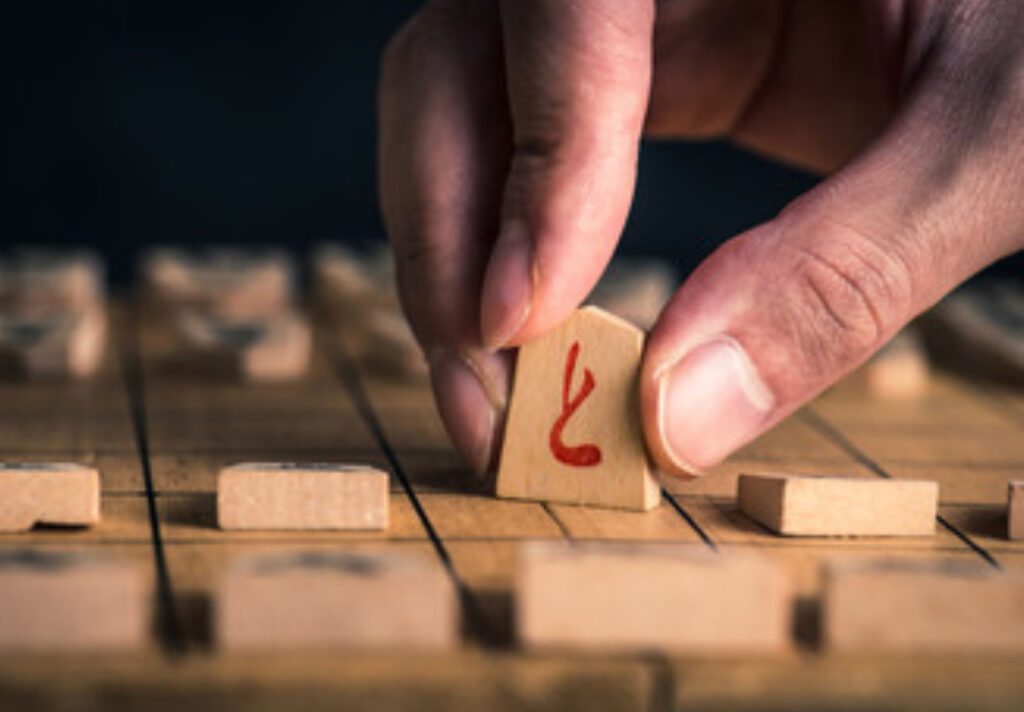
- Pawn – when promoted move exactly like a Gold General.
- Lance – when promoted move exactly like a Gold General.
- Knight – when promoted move exactly like a Gold General.
- Silver General – when promoted move exactly like a Gold General.
- Bishop (Promoted Bishop called a Dragon Horse)- move like a Bishop but acquires the power to move a single square orthogonally.
- Rook (Promoted Rook called a Dragon King)- moves like a Rook but acquires the power to move a single square diagonally.
- Gold General and King cannot be promoted.
Players alternately move their pieces according to the rules above. No two pieces can occupy the same square. If a piece already exists where the player moves his piece, it will be captured and removed from the board. The piece belongs to the captor. The catcher must keep his pieces face up and visible to both players so that they know what pieces they own.
A player with a captured piece may at any point in the game choose to drop the captured piece onto the board instead of moving pieces on the board. It has the following conditions.
- A captured piece cannot be dropped on a square that cannot move according to the movement rules of that piece.
- A captured piece is dropped in a non-promoted state, and can be promoted by subsequently invading the enemy base according to the rules above.
The unique rule that captured pieces can reappear in the game is a major factor that makes shogi games so interesting.
Memorizing the rules of piece movement in shogi is rudimentary. But it is very important. There is an interactive tutorial on the movement rules of shogi pieces that you can try.
Checkmate or Resignation
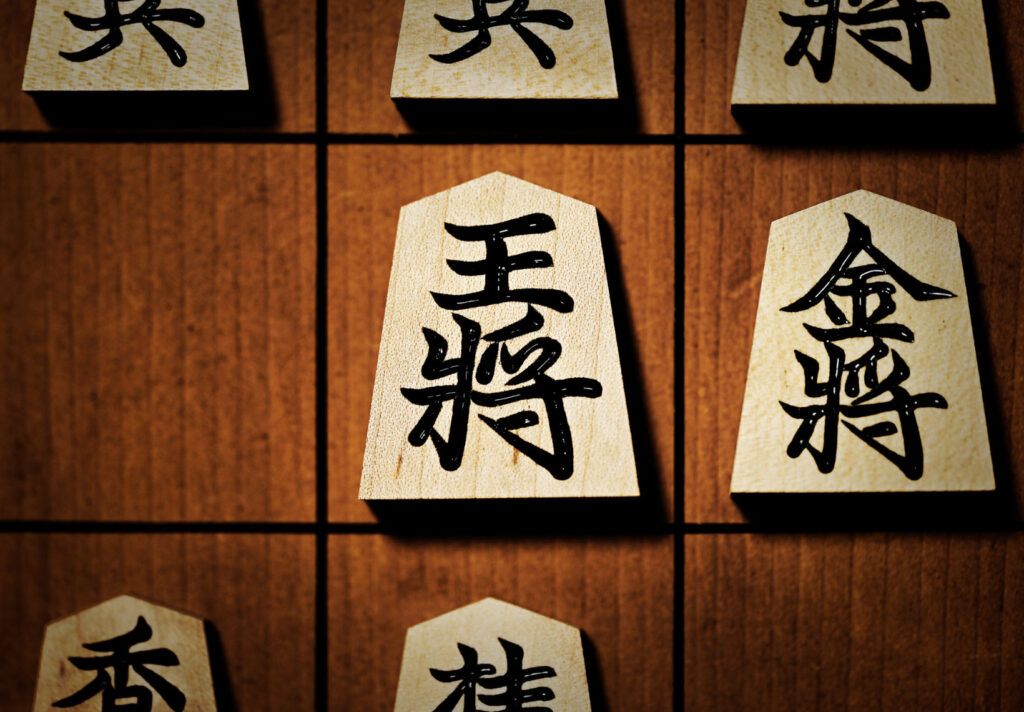
Call “Ote” when one of your pieces is in a position that could catch your opponent’s king on your next move. However, a call is not required.
As with chests, checkmate is when the king can no longer avoid being captured. The shogi game is over.
It also resigns when it comes to believing that the opposing player will inevitably win. In this case, call “I lost” or “I’m here”. This is a peculiar rule of shogi, and it is also a rational decision to save time and an aesthetic of gracefully admitting defeat.
A selection of videos explaining the rules of shogi
*If you can’t see the video below, please use a VPN. As long as you have an internet connection, you can watch it safely and reliably from anywhere. Click here for details…
What a great way to explain the rules of Shogi in just one minute. It is quite aggressive, but you will be able to get a rough idea of the rules.
The video below is about 5 minutes long. It explains the rules of Shogi very carefully. It is recommended as it is the easiest to understand.
The video below was created by the Japan Shogi Federation, a public organization that is the highest authority on Shogi. The video is about 23 minutes long and explains everything from the rules to etiquette of Japanese Shogi. It is recommended for those who want to know more about Shogi.
Tips for improving your shogi skills
Once you have memorized the rules of shogi, please actually play a game. Of course, the goal is to win, but at first, you should challenge yourself to check the rules you remember and learn the manners and tactics of shogi. Shogi is not so easy to win from the beginning. By playing against various people and repeating losing and winning, you will become stronger. Challenge yourself without fear of losing. The more challenges you take, the faster your progress will be.
World-famous online shogi game site
https://lishogi.org/
It’s free on Lishogi. You can play shogi with participants from all over the world, friends, AI, and shogi. You can also learn and research the basics of shogi, and watch and analyze other participants’ games.
https://81dojo.com/en/
81 Dojo is an online shogi game app sponsored by the Japan Shogi Association. Supports 21 languages. Shogi fans gather from all over the world. This site has pretty advanced features. Not only can you play against players from all over the world, but you can also play back and analyze various games. You can also host a shogi tournament by yourself.
Japanese professional shogi match program
Finally, we would like to introduce a service that allows you to check the game schedule of the strongest shogi professional in Japan, Souta Ryuo Fujii, and the breaking news of the game.
If you can watch this and understand the game, you are a pretty advanced player. And Shogi will become more and more fun.
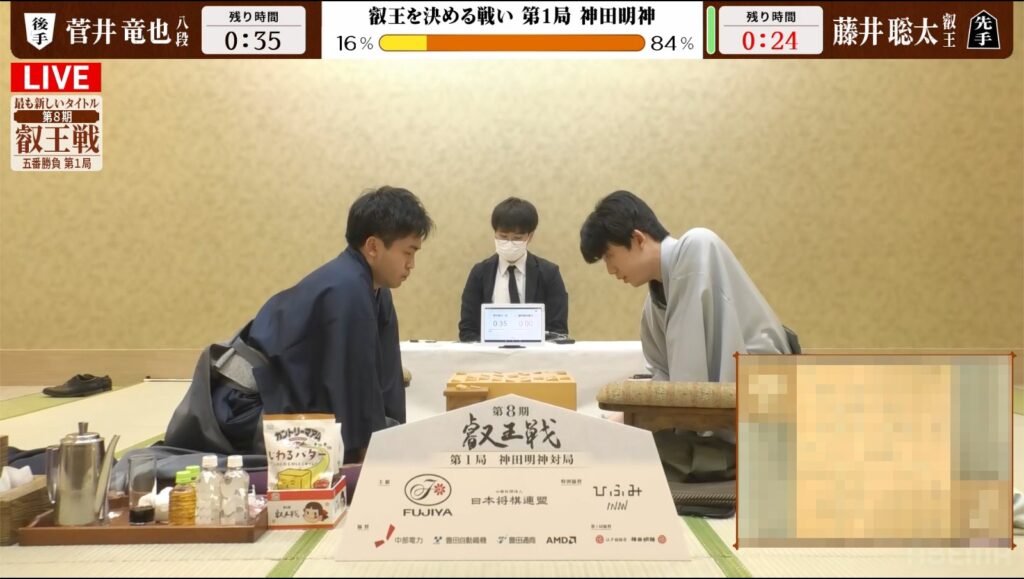
Click above to watch the shogi program that is currently airing. Free.
This is the only shogi channel in Japan (in the world). Please refer to the following page for details on how to watch this channel reliably in a separate article.


